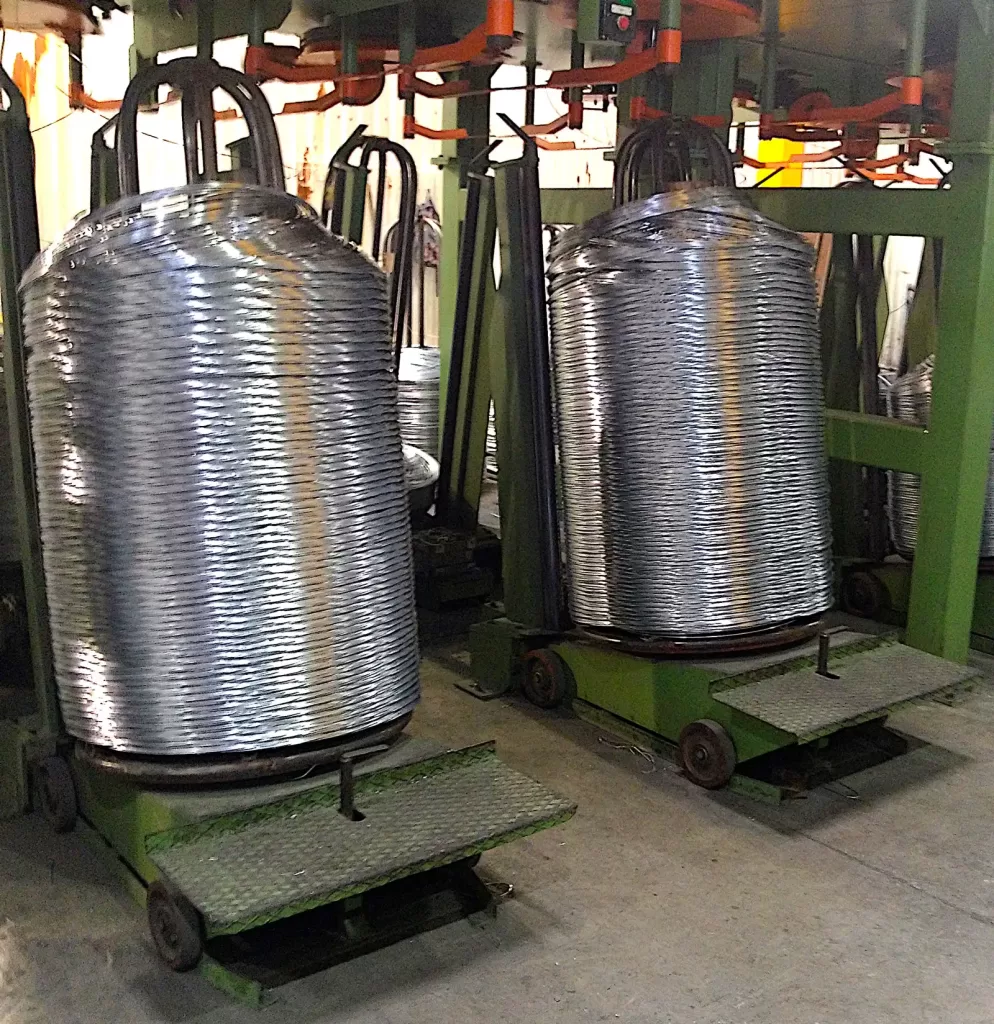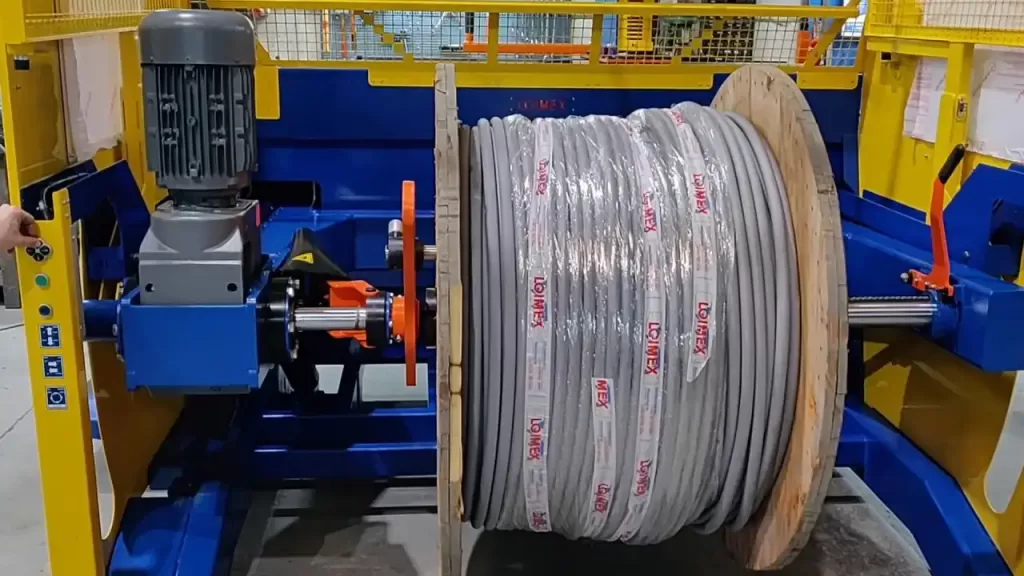Optimizing Wire Coil Handling: Understanding Compressing and Strapping Machines
Handling heavy wire coils efficiently and safely is a critical aspect of operations in the metal fabrication and wire production industries. Wire compressing machines and automatic wire strapping machines offer automated solutions to streamline the packaging and securement of these often unwieldy products.
These systems provide robust methods for creating tight, stable packages suitable for transport and storage, often utilizing materials like stretch film or strapping. Let's explore the mechanics and advantages of these essential pieces of industrial equipment.
Explore specific configurations: wire compressing machine and wire strapping machine
How Wire Coil Compressing Machines Work
A wire coil compactor typically uses hydraulic or mechanical pressure to reduce the overall volume of a wire coil. This process involves:
- Loading: The wire coil is placed into the machine's compression chamber.
- Compression: Platens or pressure plates apply controlled force, compacting the coil vertically or horizontally depending on the machine design. This creates a denser, more stable unit.
- Ejection/Transfer: The compressed coil is then ready for the next stage, usually strapping or wrapping.
The key is applying sufficient pressure to stabilize the coil without damaging the wire material itself. Modern systems often feature adjustable pressure settings controlled via PLCs (Programmable Logic Controllers) to accommodate different wire types, gauges, and coil sizes.
The Role of Automatic Wire Strapping Machines
Once compressed (or sometimes as a standalone process for bundling), wire coils require securement. Automatic wire strapping machines automate this task:
- Strap Feeding: The machine feeds strapping material (commonly high-tensile steel or PET polyester strapping) around the coil or bundle.
- Tensioning: It applies a pre-set, consistent tension to the strap, ensuring the load is held tightly.
- Sealing: The strap ends are joined, typically through heat sealing (for plastic straps) or mechanical crimping/notch joints (for steel straps).
- Cutting: The strap is cut cleanly, completing the cycle.
These machines can apply multiple straps in different orientations (radially or through the eye of the coil) as needed for optimal load securement.

Key Operational Advantages in Metal Fabrication
Integrating wire compressing and strapping machinery yields significant benefits beyond basic packaging:
Enhanced Throughput and Efficiency
Automated systems operate at significantly higher speeds than manual methods. Compressing and strapping cycles are reduced from minutes to seconds per coil, directly boosting production output and improving overall workflow efficiency. This allows operations to meet demanding production schedules and reduce bottlenecks in the packaging phase.
Improving Workplace Safety
Manually handling, compressing, and strapping heavy wire coils presents substantial ergonomic risks, including strains, sprains, cuts from sharp edges, and potential injuries from falling loads. Automation removes operators from these hazardous tasks, drastically reducing the likelihood of workplace accidents and associated costs (insurance, workers' compensation). Adhering to safety standards, such as those outlined by OSHA regarding materials handling, is more easily achieved with automated systems.
Ensuring Load Integrity and Stability
Precisely controlled compression pressure stabilizes coils, preventing loosening or shifting during handling and transit. Consistent, optimal strap tension ensures the bundle remains secure without being so tight as to damage the wire or break the strap. This leads to reduced product damage during shipping, fewer customer claims, and enhanced product quality perception.
Optimizing Material Consumption
Automated machines are calibrated to use the minimum necessary compression force and strap tension for securement. This precision minimizes waste of strapping materials compared to manual application, leading to direct cost savings and reduced environmental impact associated with packaging materials.
Durability and Reliability in Industrial Environments
Designed for demanding industrial settings, these machines feature heavy-duty construction and robust components. This ensures reliable performance under continuous, high-volume operation with planned preventative maintenance, maximizing operational uptime and extending the equipment's lifespan.
Space Efficiency and Capacity
While capable of handling large and heavy coils, modern wire compressing and strapping systems are often designed with a compact footprint relative to their processing capacity. This optimizes valuable floor space within a manufacturing facility while still delivering the high throughput required for large-scale operations.

Integrating Compressing and Strapping Systems
For maximum efficiency, compressing and strapping machines are often integrated into a single automated line. Coils move seamlessly from the compactor to the strapper via conveyors, controlled by a centralized system. This integration further reduces manual handling and optimizes the entire packaging process flow.
Considerations for Implementation
When selecting wire handling equipment, factors to consider include:
- Coil Specifications: Size (ID/OD), weight, and type of wire material.
- Throughput Requirements: Coils per hour needed to match production rates.
- Strapping Needs: Type of strap (steel/PET), number and orientation of straps.
- Level of Automation: Standalone machines vs. fully integrated lines.
- Available Floor Space and Budget.
Conclusion
Wire compressing machines and automatic wire strapping machines represent crucial technologies for the modern metal fabrication and wire industries. They provide efficient, safe, and reliable solutions for preparing wire coils for shipment and storage. By enhancing throughput, improving safety, ensuring load integrity, and optimizing material use, these systems contribute significantly to operational efficiency, cost reduction, and overall product quality. Investing in appropriate automation for wire coil handling is key to maintaining competitiveness and safety in demanding industrial environments.